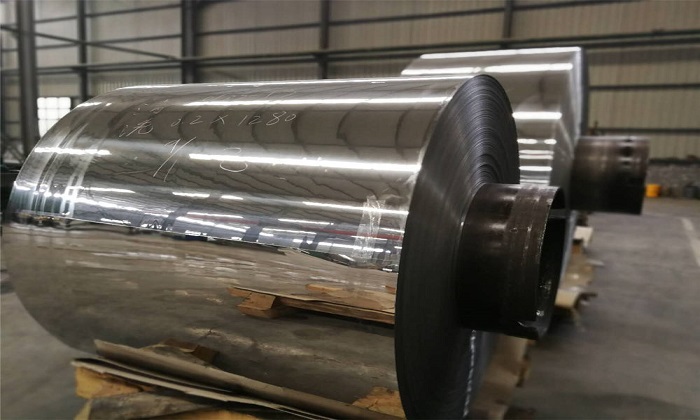410S stainless steel is a low carbon, non-hardening general purpose 12% chromium martensitic stainless steel. Low carbon and small alloying additions minimize austenite formation at high temperatures, which limits the hardening ability of this stainless steel. 410S remains soft and malleable even when cooled rapidly from above critical temperature. This non-hardening property helps prevent cracking when the alloy is exposed to high temperatures or welded. 410S is fully ferritic in the annealed condition. It exhibits corrosion resistance comparable to 410 and good oxidation resistance.
The applications of 410S stainless steel mainly include petroleum refining and chemical industry; distillation trays; heat exchangers; ore processing; mining machinery; heat treatment equipment; annealing boxes; quenching racks; gate valves; pressure plates.
410S stainless steel has good oxidation resistance and can be used continuously at temperatures up to 1300°F (705°C). In intermittent service, the scale becomes over 1500°F (811°C).
The corrosion resistance of 410S stainless steel is similar to that of Type 410, resistant to corrosion in atmospheric conditions, fresh water, mild organic and inorganic acids, alkalis and some chemicals. Exposure to chlorides in daily activities (eg food preparation, physical activity, etc.) is satisfactory when exposed to proper cleaning after use.
410S cannot be hardened by heat treatment. Anneal between 1600 - 1650°F (871 - 899°C), then air cool to relieve cold working stress. Due to embrittlement, 410S should not be exposed to temperatures above 2000°F (1093°C). If large grains are found in mildly annealed cold-worked material, the annealing temperature should be reduced to 1200 - 1350°F (649 - 732°C).

410S is generally considered to be weldable by common fusion and resistance techniques. Special care should be taken to avoid brittle weld fracture during fabrication; this includes minimizing discontinuities, maintaining low welding heat input, and occasionally warming the part prior to forming. The weldability of 410S is generally considered to be slightly worse than that of the most common 409 ferritic stainless steel. The main difference can be attributed to the addition of alloys to control hardening, which results in higher heat input during welding.
410HT stainless steel is the basic general heat treatment type of 410 stainless steel. It is a martensitic type, used for general use, and corrosion is not severe. Alloy 410 contains at least 11.5% chromium, which is sufficient to demonstrate corrosion resistance in mild atmospheres, steam and many mild chemical environments.
410HT Stainless Steel is ideal for applications requiring corrosion resistance and high mechanical properties. Examples of applications where Alloy 410HT is frequently used include: knives, steam and gas turbine blades, cookware, bolts, nuts, screws; pump and valve components and shafts; my ladder carpets; dental and surgical instruments; nozzles; hardened steel balls and oil well pump bases .
In terms of corrosion resistance, 410HT stainless steel has good corrosion resistance to atmospheric corrosion, drinking water and mildly corrosive environments. When exposed to proper cleaning after use, its exposure to daily activities (exercise, food preparation) is usually Satisfactory, good corrosion resistance to low concentrations of mild organic and inorganic acids.
410HT stainless steel is welded by all standard methods. To reduce the risk of cracking, it is recommended to preheat the workpiece to 400 F (177 to 204 C). Post weld annealing is recommended to maintain maximum ductility.
In terms of heat treatment, the proper thermal working range is 2000 to 2200 o F (1093 to 1204 o C), do not use this material below 1650 o F (899 o C).



